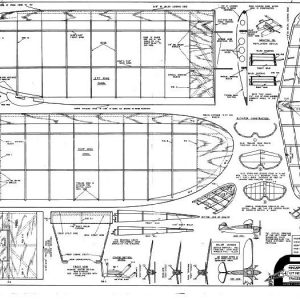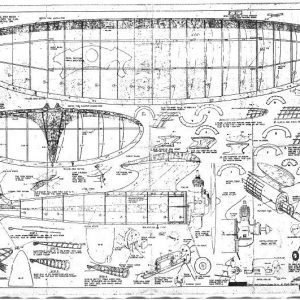
Power was slated to come from 4 x General Electric GE4/J5P afterburning turbojet engines outputting 63,200lb of thrust each. A tricycle undercarriage would be fitted for ground-running with the nose leg sporting twin wheels and the main legs given six wheels each (across three bogies) - such was the estimated weight of this massive aircraft.

Under each wing member, and towards the trailing edge line, would be four podded engine nacelles each housing a single turbojet engine (two engines per wing). The wings were of delta-wing configuration with well-swept leading edges and straight trailing edges. The nosecone would have been hinged to angle down and provide improved viewing for the piloting crew during ground maneuvering, take-off, and landing actions. The most likely form, the Model 2707-300, showcased a slim, rounded fuselage with a very pointed nosecone at front and traditional single-finned tail unit at the rear. Empty weight was to reach 287,500lb against a Maximum Take-Off Weight (MTOW) of 430,000lb. Three versions of what would become the "Model 2707" SST were drawn up by Boeing engineers: the original "Model 2707-100" was to feature a variable sweep ("swing-wing") wing for real-time, in-air changes to the mainplanes as needed, the "Model 2707-200" sporting canards for additional control (while retaining the swing-wings of the Model 2707-100), and the "Model 2707-300" with its more traditional fixed-wing mainplanes.Īs finalized, the canard-equipped, swing-wing Model 2707-200 was to have an overall length of 306 feet, a wingspan of 180.3 feet, and a height of 46.2 feet.

The movement was aided by the political and military "race" against the East that was the "Cold War", with the primary enemy being the Soviet Union. Momentum grew before the end of the decade and the company began to pour additional funding and engineering power into the concept which ultimately begat such internal projects as the "Model 733". Supersonic airliners were on Boeing's radar as early as the early-1950s as several design studies were undertaken into the feasibility of such aircraft in the commercial sector. North American Aviation proposed their "NAC-60" which was based on their ultimately-abandoned / cancelled XB-70 "Valkyrie" supersonic bomber. Lockheed, another contender for the SST competition, also cancelled their "L-2000" development in 1971. By this time, Europe had already been flying its classic "Concorde" supersonic airliner and the Soviets delivered on their Tupolev Tu-144 (both detailed elsewhere on this site).

#Boeing model 94 mailplane plans full#
While some development on the advanced aircraft was had during the height of the Cold War period (1947-1991), it was ultimately cancelled in full during 1971. This aircraft would have been powered by no fewer than four turbojet engines and reach cruising speeds near Mach 3 (approximately 2,300 miles-per-hour). During the 1960s, in the global race to achieve supersonic passenger flight (under the adopted title of "SuperSonic Transport" - or "SST"), the American concern of Boeing drew up plans for a 250- to 300-seat speedster under the model designation of "2707".


 0 kommentar(er)
0 kommentar(er)
